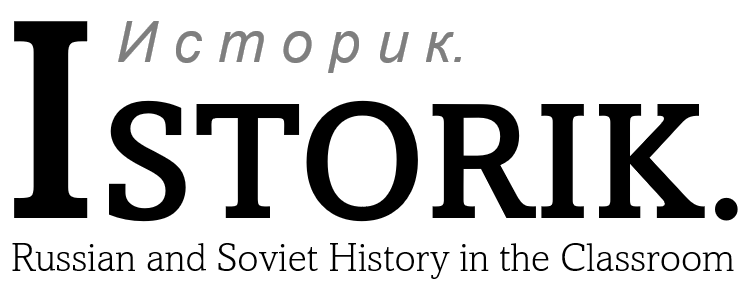According to one recommended textbook for our A-Level course, after the February Revolution of 1917 Russia experienced a period of dual power, “whereby Russia was governed by an alliance of the Provisional Government and the [Petrograd] Soviet.” This completely reasonable assessment, which echoes decades of historiographical orthodoxy, has just one problem – power in 1917 just didn’t look like this for most people.
In reality, power was shared across the Russian Empire by baffling
configurations of seemingly endless councils, associations, committees,
militias, unions, and so on which were rapidly established (or reconfigured)
after Tsar Nicholas II and his government were overthrown, particularly outside
the capital city, Petrograd.
I vividly remember a conference marking the centenary of the
Russian Revolution where the brilliant Michael Hickey, an expert on the western
Russian city of Smolensk, presented a paper entitled: “Lost in the
vermicelli?” The title is a reflection of the frustration and confusion local government
officials and activists felt at the seemingly labyrinthine structures of power during this time.
How might this confusing picture be conveyed to students,
and what are the risks of doing so (when the exam board insists on sticking to
an orthodox “dual power” framework)?
This post provides an explanation and outline of my approach to teaching the question of “dual power” and its corollary, “multiple power”.
All lesson resources can be found on the Google Drive folder
here.
In
Context
Immediately following the abdication of Tsar Nicholas II in March 1917, a Provisional Government was established, largely made up of liberal notables and led by Prince Georgii Lvov, a famous Zemstvo activist. The clue was in the name: provisional (in Russian, literally “temporary” [vremennyi]). Its principal weakness was that, in claiming to lead a democratic revolution, it was unelected and unrepresentative of the wider population.
At the same time, a council of workers and soldiers, the Petrograd Soviet was established. Its moderate socialist leadership of Mensheviks and SRs, although suspicious of the “bourgeois” Provisional Government, refused to overthrow it and seize power. Instead, it agreed to support the Provisional Government “insofar as” it accepted popular demands in the revolution. In practice, the two authorities coexisted for the next few months, holding together a rickety semblance of state power between them.
This power-sharing arrangement appeared, at first, to be similar in towns and cities around Russia, where local soviets and government committees existed together. But this often hid a wide array of different local organisations which variously contributed to, complicated, and undermined state power. This reality was known at the time, and has since been labelled by some historians, as "multiple power" (mnogovlastie), rather than "dual power" (dvoevlastie).
Key Considerations for Teaching
- Students need to know about the idea of “dual power” – not least because in public examinations they will be tested on this knowledge.
- At the same time, they should be aware that the reality was much more complicated. It’s just good history to teach them this!
- It’s impossible to convey fully the enormous range of different local organisations involved in power in 1917 – some choice examples that were seen in different places should be enough.
- We should be careful to encourage students to define the terms they are using in their essays – this is also good history, but it’s also a safeguard against examiners who haven’t heard, for example, of “multiple power” (I recommend to my students that, if they use this term, they first reference the idea of “dual power” to stay safe of the mark scheme). As one colleague pointedly asked me, "Will the person marking their essay know what 'multiple power' actually is?"
Vocabulary
and Substantive Concepts
Before tackling this lesson, students should have a grasp of the following terms and their meanings.
- state/authority
- soviet
- State Duma
- zemstvos
- town dumas
- militias
- trade unions
- peasants
- workers/proletariat
- middle classes/bourgeoisie
- socialists
- liberals
Lesson Outline and Resources
- The basic model of “dual power” is introduced to students, tracing the origins and structural basis for the Provisional Government and Petrograd Soviet. Information on the sheet can be interrogated through questions about these new power structures.
- Students then summarise the key features of the Provisional Government and Petrograd Soviet under two columns – creating a resource that will be used to consider the extent and limitations of the “dual power” structure later in the lesson.
- The question of “dual power” is raised again, as students are introduced to the wider array of organisations that had some involvement in power in 1917.
- Using the groups and organisations on the grid in their information sheets, students try to align these organisations within the “dual power” framework, under either the Provisional Government or Petrograd Soviet (if they are to accept the “dual power” framework, these organisations should largely fit under one or the other).
- Now, students should consider the problems they encounter trying to fit these organisations within this framework. If they don’t fit, what does that suggest about power in 1917?
- Finally, introduce students to Orlando Figes’ brief interpretation, as a potential resolution to this problem. Students do not have the accept or agree with this interpretation – not all historians do. If they don’t, however, they should be able to articulate why not.
Further
Reading
Orlando Figes, A People’s Tragedy: The Russian
Revolution, 1891-1924, Pimlico (1997), chapter 9
Ian D. Thatcher, “The Practice of Power in 1917” in Daniel
T. Orlovsky, ed., A Companion to the Russian Revolution, Wiley Blackwell
(2020), 69-76
Rex Wade, The Russian Revolution, 1917, Cambridge
University Press (2017), chapters 2-3






No comments:
Post a Comment